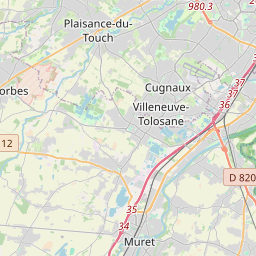About
Who are we ?
Members
Divisions
Teams
Article in HAL
GenPhySE
Genetics Physiology and Breeding Systems
The GenPhySE unit was established in 2014 through the fusion of three units at the INRAE Toulouse-Auzeville site, engaged in research on animals. GenPhySE's scientific activities are focused on characterising and understanding the complex mechanisms underlying animals' ability to adapt to changing environments. Our objective is to develop innovations in genetics, nutrition and livestock management, ensuring the diversification and sustainability of future production systems.
GenPhySE unit is part of the INRAE Animal Genetics (GA) and Animal Physiology and Livestock Systems Divisions (PHASE). We are also affiliated to the Toulouse Veterinary School (ENVT) and the Polytechnic Institute of Toulouse (INP)
The research is carried out at different scales of resolution, from DNA to the cell, tissue, animal, herd, and system. GenPhySE's scientific activity is organised into five research divisions comprising ten research teams.
In addition to its research divisions, GenPhySE also hosts five platforms or collective structures : Chromosomal control platform, Sigenae, IT & Automation, Experimental facilities and UMT Star.
Positioning
Collaboration map
Our divisions and teams
Organization chart
Contact
How to find us ?
To reach one of our three sites (INRAE GenPhySE, ENVT, ENSAT), the address of which is given below, from the station or airport,
please use the "route" panel, accessible via the control button "" at the bottom right of the map.












Our addresses
INRAE GenPhySE
24, chemin de Borde-Rouge
Auzeville Tolosane
31326 Castanet-Tolosan
France
+33 (0)5 61 28 51 09
ENVT
23, chemin des Capelles
B.P. 87614
31076 Toulouse Cedex
France
+33 (0)5 61 19 39 53
ENSAT
Avenue de l'Agrobiopole
CS 32607
31326 Castanet-Tolosan
France
+33 (0)5 34 32 39 00
Executive team
Juliette Riquet - Director
juliette.riquet@inrae.fr
Laurence Lamothe - Deputy Director
laurence.lamothe@inrae.fr
Ingrid David - Deputy Director
ingrid.david@inrae.fr
Staff
secretariat-genphyse@inrae.fr
Monday - Thursday: 8:30 - 12 am / 1:30 - 5 pm
Friday : 8:30 - 12 am / 1:30 - 4 pm



















